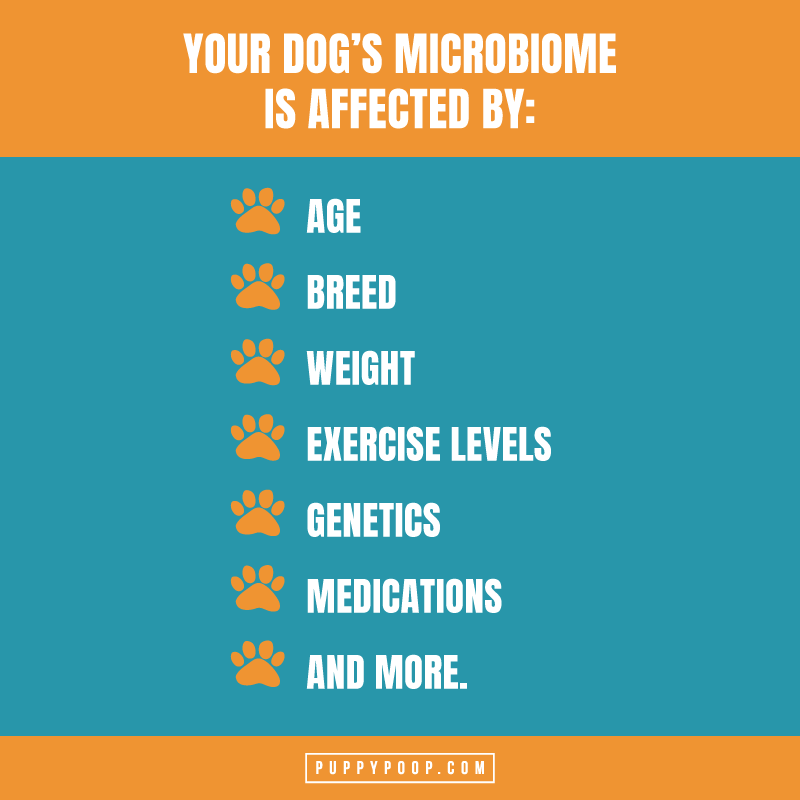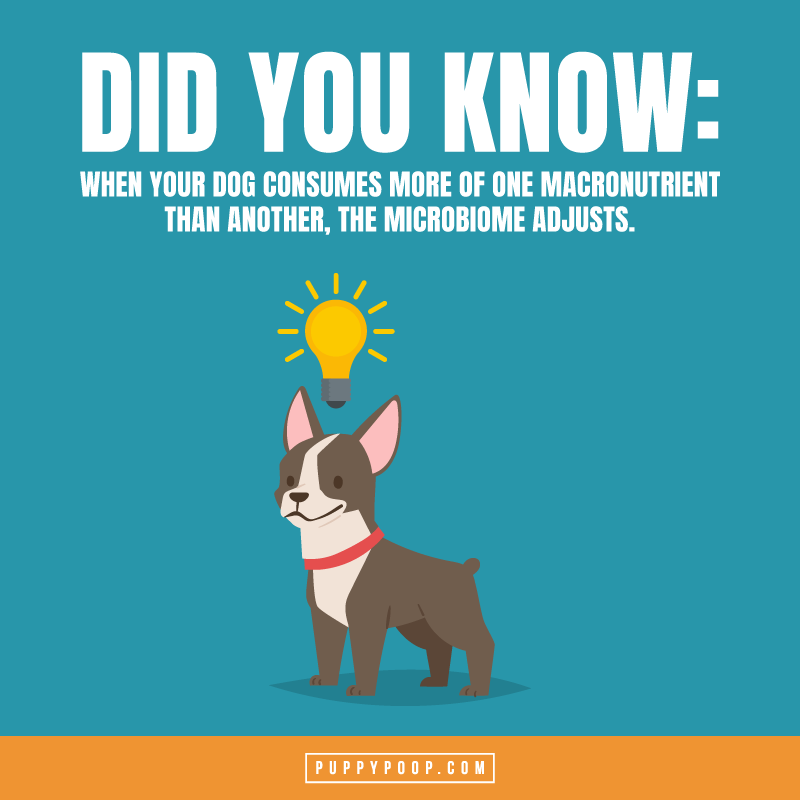No matter how hard we as dog parents try, it is all but impossible to get a full picture of a dog’s entire diet. From an extra bedtime biscuit, to a handful of training treats on a walk, extra calories can sneak in. Over time, these extras can accumulate to extra pounds on our furry friend. When those extra calories are carbs, our dogs’ gut responds differently than to proteins or fats. In this article, we will discuss how diet affects the microbiome. We will also focus on a special bacteria – prevotella bacteria in dogs, and its relationship with carbohydrates.
Microbiome
As discussed in our earlier blog post, the microbiome is the ecosystem of bacteria living on or inside an animal, and in this case, our dogs. There can be many microbiomes in a single animal, including the gut, skin, and mouth. Both humans and dogs have microbiome communities like this! The microbiome is very complex, and the source of both emerging and ongoing research. Every dog’s microbiome is unique! Like a fingerprint. Your dog’s microbiome is affected by:
- age
- breed
- weight
- exercise levels
- genetics
- medications
- and more
As you may suspect, diet also has a significant impact on the constituents of your dog’s microbiome.

Which bacteria make up our dog’s microbiome?
Most of our dogs’ gut microbiome is in the intestines. The small intestine is home to a broad diversity of bacteria. The large intestine only is home to bacteria that grow and survive without any oxygen – “anaerobic” bacteria.
Scientists group bacteria into “taxonomic groupings” based on their job or their features. Each level of the grouping becomes more and more specific. Phylum and Genus are two examples of taxonomic groupings, where phylum is much broader than genus.
When it comes to dog digestion, the 3 most important phyla are Fusobacterium, Bacteroidetes, and Firmicutes. Each of these phyla serve a special and unique role when it comes to breaking down the various macronutrients in your dog’s food. Fats, proteins and carbohydrates are each consumed by different bacteria. These bacteria help break down the food into appropriate micronutrients that the body can use.

Here’s the cool part:
When your dog consumes more of one macronutrient than another, the microbiome adjusts.
The bacteria actually respond – accommodating the fuel that the dog is ingesting. This way, the gut is maximizing its ability to create viable micronutrients for the body.
For example, with a high ratio of carbohydrates, the bacteria that thrive on carbohydrates can flourish. They then comprise a larger percentage of the microbiome, versus others that thrive on fats or proteins. These carb-loving bacteria happily and greedily consume these carbs. Scientists would say that their metabolic activity (their way of creating energy) relies on carbohydrates.
To be clear, all macronutrients are necessary to create a balanced, complete diet. Carbohydrates, for example, are key during high energy need situations:
- pregnancy
- puppyhood
- lactation
According to the same published literature, dogs require at least 18% to 29% protein in their diets.
High Carb vs. Low Carb Diets
Now let’s compare different diets and their effect on the microbiome. On one hand, we have a low-carb dry food. On the other, a high-carb dry food.
In published literature, a low-carb diet demonstrated an increase in specific bacteria, and a decrease in others.
- Increased Genuses: Clostridiaceae, Lachnospiraceae, and Ruminococcaceae
- Decreased Genuses: Erysipelotrichaceae, Veillonellaceae, and Lactobacillaceae.
Perhaps even more fascinating, a high-carb diet demonstrated a 4.6x increase in Prevotella bacteria in dogs than in a low-carb diet. There was also a higher ratio of Bacteroides: Firmicutes phyla. Investigators also noted increases in Bacteroides and Firmicutes phyla as well. What does all of this mean?
What is Prevotella Bacteria in Dogs?
Prevotella is a member of the Bacteroidetes phylum, with many species. It is an anerobic, single-cell, non-motile bacteria that lives in our dog’s gut. As discussed above, Prevotella has a strong demonstrated association to carb level, especially plant-derived carbs. Prevotella’s role is to help breakdown complex carbohydrates. A superhero among bacteria, Prevotella can break down anything from tough plant fibers like xylan to simple sugars like glucose.
Prevotella is also associated with different types of chronic digestive conditions. A decrease in Prevotella can sometimes accompany a gastrointestinal disease. Unfortunately, with fewer prevotella, the ingested carbs aren’t able to be efficiently converted to energy.
Prevotella is so interesting that scientists are learning how to use it as a way to estimate carbohydrate load in a dog’s diet.
OK, my dog’s diet affects the microbiome – so what?
As we know all too well, carbs can sneak in through treats, table scraps and more. When this happens, an inadvertent imbalance occurs. This macronutrient imbalance, especially on top of other conditions like obesity or chronic disease, can be the tipping point for an upset tummy.
Additionally, as microbiome imbalances occur, it leaves the body vulnerable to attack from germs and viruses.
Most commercial kibble brands are higher carb (and therefore low protein). Higher levels of Prevotella, Clostridium, Lachnospiraceae, and Ruminococcaceae species are often observed. While these bacteria are great at fermenting carbs, their presence also may indicate a macronutrient imbalance.
Now that you know how your dog’s diet affects their microbiome and their body, it will help you make more informed decisions on what you feed them. After all, our dogs are what they eat, just like us.
Get the DIG Labs App
Download the free DIG Labs Digestive Health Tracker to get personalized insights and recommendations for your dog based on their stool.

